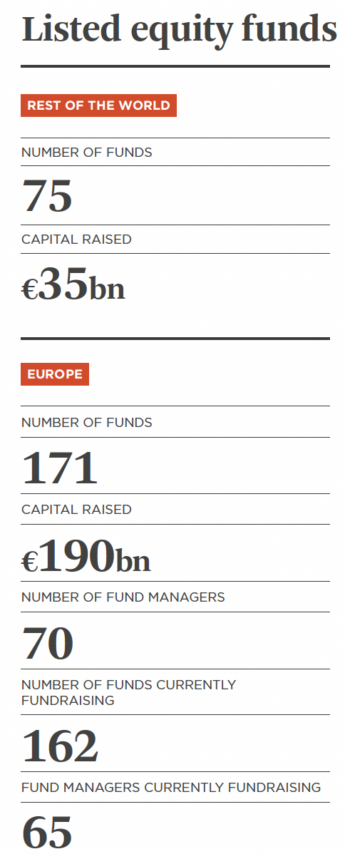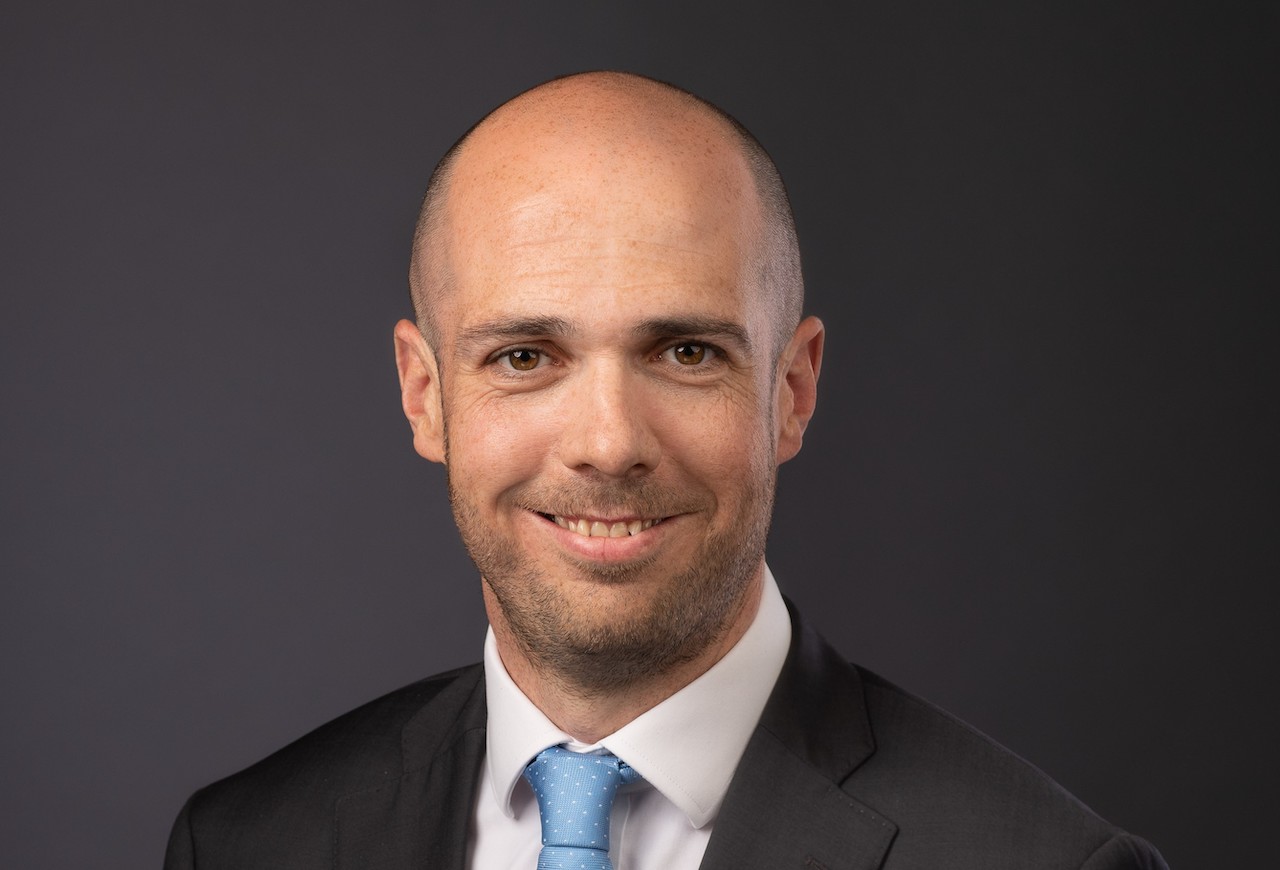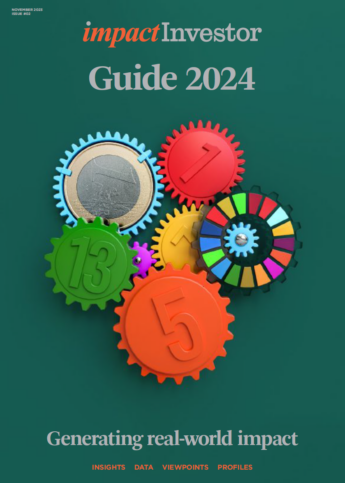From our Guide 2024: The growth in listed equity impact funds continues, as the sector expands beyond its private market origins. But can investors really generate additional and measurable impact when investing in stocks?

Investors are increasingly seeking impact strategies in public markets and particularly in listed equities, according to research from the Global Impact Investing Network (GIIN). The ‘Guidance for pursuing impact in listed equities’ report, published in March 2023, states that “a financial ecosystem that only includes private markets is incomplete and public markets are an important part of the life cycle of companies that aspire to reach a certain scale”.

Ingrid Kukuljan, head of impact and sustainable investing at Federated Hermes Limited, believes that while private markets are likely to deliver a greater impact for each dollar invested, they lack the scale that public markets offer. “Public equity investors have a very important role to play as providers of permanent capital to scale up impact. The preferred exit route for many private businesses is via IPOs and that is where we step in to support the future growth and scaling of impact.”
Companies need long-term investors at every stage of their life cycle, Rosie Rankin, a director for the Positive Change team, Baillie Gifford’s global equity impact strategy, points out. “Great ideas often start small intending to solve great challenges. At this stage they are often too small to make a meaningful impact and it is not until they hit the public markets that they achieve the scale to achieve greater impact.”
Theory of change
Proving the level of impact and the ability to validate the impact thesis, set at the start of the investment process often referred o as the ‘Theory of Change’, enables investors to demonstrate that the company invested in has met the set goals, and stops investors from retroactively claiming intentionality.
Rankin says intent has to be incorporated in every aspect of the investment process and be obvious in order to contribute positively to the world. “This determination has to come through in every aspect of what you do from the research to stock selection. It has to be obvious in your philosophy and listed equity strategy.”
Intent can be demonstrated through the way impact is measured and reported and is a key aspect for credibility and accountability of impact investors. Those interviewed are of the opinion that because something is hard and constantly developing and evolving is not a valid excuse to shy away from it. “We recognise there are imperfections in impact data but it is only by attempting to do better that we can drive change and improve,” Rankin says.
Kukuljan says that Federated Hermes deliberately set the bar high for impact validation. “All companies have a complex mixture of positive and negative impacts. An imperative for public impact investing, therefore, is not just to find companies whose whole purpose is impactful — they are not that plentiful — but to help encourage a broad reduction in negative impacts and reinforce the positives. We treat impact measurement according to its complexities, using a framework that prioritises these complexities over simple numbers.”
Individual or one-off stock picking presents challenges for most investors to have meaningful impact or additionality, and can lead to the outsized risks of an undiversified portfolio, according to Sandra Osborne Kartt, deputy CIO, ImpactAssets Capital Partners, a US-based impact investment specialist. “But investing in fund managers with an intentional impact theory of change could be a great way to derive impact from listed equities while achieving financial returns. There are mutual funds and ETF managers who are starting to focus on that intentionality and are supporting either movements for change around social justice or investing in the enablers of the transition to a clean energy future.”
Richard Clode, tech portfolio manager, Janus Henderson Investors, notes: “I think in both private and public investing [impact investing] is challenging. It also depends on the nature of the business model. If as investors we are providing capital to build an EV battery plant, e.g., Northvolt when they come to IPO, then that intentionality and additionality are clear but for less capital-intensive business models that can be harder.”
He adds: “The challenge for public investing in this framework is that providing primary capital is only part of what we do albeit now that debt is no longer free the role of equity capital is now much more important. It is more difficult to prove that additionality when just owning a share of existing capital, but we can still demonstrate intentionality.”
Investing in enablers
Intent and additionality are key, but for impact investing to truly make a difference in the real world, by solving urgent problems, many argue that expanding the universe for impact investing is the way forward.
‘Pure’ impact investors are often niche players or a division within a larger business where quantifying the impact can be problematic, Mikhail Zverev, fund manager, Amati Global Investors’ Strategic Innovation Fund, says. Prior to joining Amati, Zverev headed up Standard Life Investments’ global equities team, which launched its Global Equity Impact strategy. He had a similar role at Aviva when they launched their Climate Transition Global Impact Fund.
These impact investors rely on an ecosystem of enabling technologies, services and components, which is similar to the innovation investing dilemma; do you invest in a high risk/high reward/high impact pioneer, or do you look for picks and shovels suppliers enabling the work of the pioneers, he questions, arguing that for a listed equities mandate this enabler category can expand the investment universe and improve the risk/ reward trade-off. He points to investment cases in areas such as electric grid modernisation which supports renewable energy pioneers, power semiconductors, supporting auto and industrial electrification pioneers or life sciences tools, services and bioprocessing which in turn support life sciences pioneers.
Clode says that if his team can demonstrate that a technology product or service is enabling other companies to reduce their carbon footprint, more efficiently utilise resources or drive greater financial inclusion or better health or education outcomes then the team would believe that providing such companies with growth capital to sell more of those products and services would be a positive outcome and there is both intentionality and additionality from that capital allocation.
Engagement
The intent and ambition of many impact investors is to drive the change for good and one of the most powerful tools listed equity investors can use in driving change is shareholder engagement.

For Katerina Kosmopoulou, partner and co-manager of the World Stars Global Equity Fund at London-based J Stern & Co., being a long-term investor with a buy and hold strategy, whilst clearly communicating that impact is informing investment decisions, acts as a powerful signalling mechanism to the markets. Other areas of engagement available to listed equity investors is voting at the AGMs, which again can be a powerful tool to drive change, she says. J Stern & Co., is not a ‘pure’ impact investor but focuses on ESG integration, engaging with companies to deliver better sustainability outcomes.
KBI Global Investors (KBIGI), the Dublin-based asset manager, has its own proprietary way of engagement, mapping the revenue impact of its companies’ business activities annually and calculating whether or not they are making a positive, neutral or negative contribution in respect of the UN SDGs. This exercise gives them the opportunity to engage and understand the strategy of the companies that score negatively and influence them to improve.
Colm O’Connor, head of portfolio management, natural resources, KBIGI, says every aspect of the company is looked at, including all underlying activities. Over 3/4 of the KBIGI’s Natural Resources strategy’s revenue is positively aligned to the SDGs, he says. That strategy invests in companies addressing global shortages in clean and safe food, water and energy.

A specific area which O’Connor and his team look at is, for instance, net-zero objectives and whether short and medium-term objectives have been set, are realistic and independently verified. “It is very easy for the current management to set long-term objectives for 2045 or 2050 when they will not be around. We want to verify that the objectives are not just unreliable long-term aspirations. If we have identified a company in transition but with realisable, tangible objectives we will consider them eligible for the portfolio rather than screening them out,” he explains.

This article is part of the editorial content of the Impact Investor Guide 2024. You can download a digital copy of the guide here.





